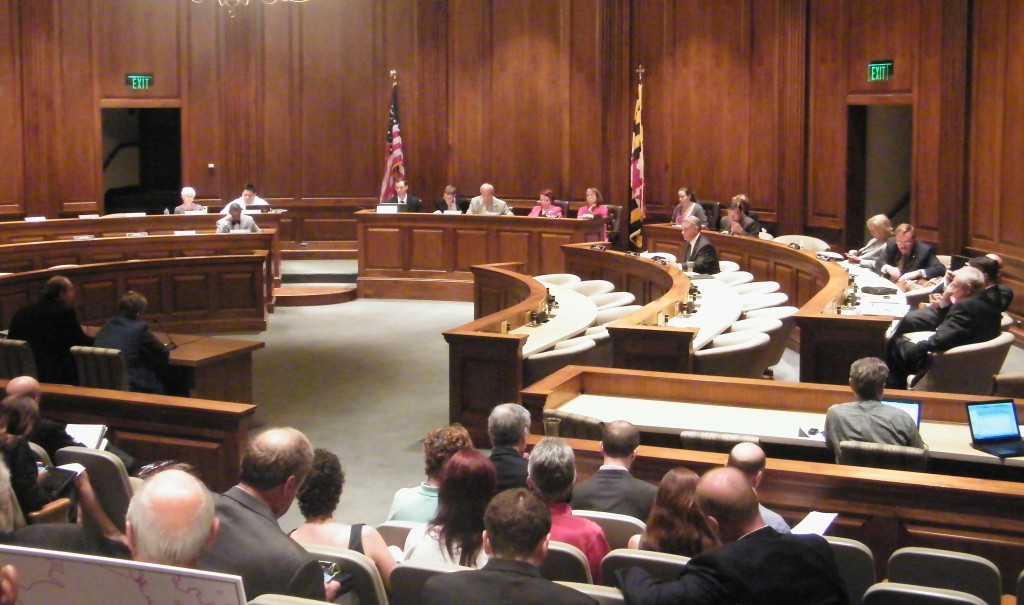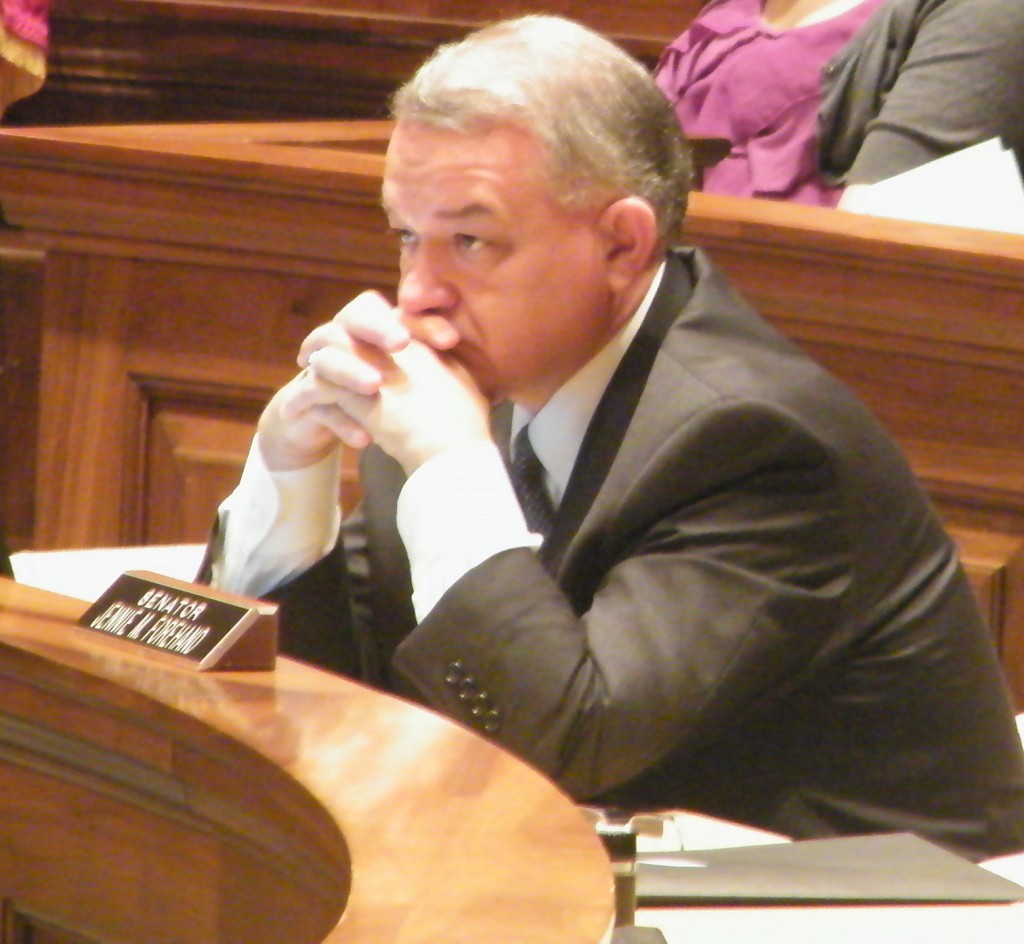New septic system requirements fire up opponents at hearing
By Dana Amihere
[email protected]
More than two dozen witnesses testified before a joint legislative committee Tuesday on proposed regulation for upgraded septic systems across the state, most of them opposing the rule change.
State Department of the Environment officials who wrote the regulations –– the only proponents aside from environmentalists –– told the Administrative, Executive and Legislative Review joint committee that applying best available septic technology statewide is the way to reduce nutrient sediment load in the Chesapeake Bay.
Sen. David Brinkley, R-Frederick, a committee member, and other opponents, however, didn’t buy the underlying science and faulted the Environment Department for “nonsensical” numbers.
Family farmer John Rigdon of Harford County said, “If 6% of (nutrient sediment) is getting into Bay, it took 200 years to get there. It’s not going to increase by 6% each year” with future development.
Brinkley argued that not only do septic installers stand to gain from the mandate but Marylanders would be footing the bill for benefits reaped by neighboring bay states.
Other legislators also found the proposed regulation to be too expensive and beyond the scope of the Environment Department’s authority.
There were so many members missing from the committee that it could take no official action on the septic upgrades. The AELR committee also heard testimony opposing new restrictions on use of manure on farms, which were opposed by many farmers.
“Maryland Department of Everything”
Environment Secretary Robert Summers based his department’s authority to impose a statewide best practices mandate on the state’s code of regulation. Carroll County Board of Commissioners vice-president Richard Rothschild, R, however, said the Department was overstepping its boundaries and should be called the “Maryland Department of Everything.”
Senate Minority Leader E.J. Pipkin, R-Cecil, blasted the State Environment Department for using its regulatory authority to end-run the legislature and Gov. Martin O’Malley for allowing it.
“Once again the governor displays a breathtaking arrogance to change the law. He has an environmental agenda. And he is not about to let a mere 188 elected lawmakers get in his way,” Pipkin said.
Senate President Mike Miller had criticized the department’s move during the special session in May as “disrespectful to the Senate” after Brinkley had tried to amend a budget bill and stop the regulation. The legislature had passed a major legislation on septic systems that was amended to restrict state authority.
Big money, little impact
Maryland Association of Realtors president Patricia Terrill said that the regulation, while focused on future development, does impact existing property owners. If changes are made which change the capacity of an existing septic system, that system would have to be upgraded to best available technology, carrying a price tag of $8,000-$12,000.
St. Mary’s County Board of County Commissioners member Cindy Jones, R, and Del. Charles Otto, R-Wicomico, –– representing one of the poorest jurisdictions in the state –– urged the committee to consider the financial burden the regulation would have for homeowners.
Carroll County’s Rothschild said $1,000 to remove 3-4 pounds of nitrogen with less than one-tenth of 1% impact is “a dog that doesn’t hunt and doesn’t get us to where we need to be.”
Bay on the brink?
Summers argued that in order to comply with federal rules limiting the amount of nitrogen and phosphorous going into the Bay and its watershed and to restore water quality “best available technology” needed to be applied statewide, not just in areas within 1,000 feet of tributaries.
Maryland’s estimated 420,000 septic systems each introduce 24 pounds of nitrogen per year into state waters, Summers said. That compares to about 2 pounds per household connected to sewer systems with enhanced nutrient management systems.
If the proposed regulation is approved and the projected 2,200 new septic systems across the state are required to implement the best available technology, the nitrogen output into the Bay would be roughly equivalent to 31,000 pounds of nitrogen, or the amount produced by the city of Cambridge. Summers noted that the number of new homes is a conservative estimate following the housing collapse. If the market picks up, as many as 5,000 new septic systems could come online.

MarylandReporter.com is a daily news website produced by journalists committed to making state government as open, transparent, accountable and responsive as possible – in deed, not just in promise. We believe the people who pay for this government are entitled to have their money spent in an efficient and effective way, and that they are entitled to keep as much of their hard-earned dollars as they possibly can.


